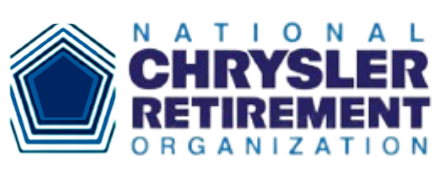1. Chair Yoga for Flexibility and Balance
Suggested Image: A senior sitting on a sturdy chair, stretching their arms overhead in a relaxed pose.
Chair yoga is a gentle way to improve flexibility and balance without putting strain on the joints. This form of exercise is perfect for seniors with limited mobility or those who need additional support.
Simple Chair Yoga Moves:
- Seated Side Stretch: Sit tall in a chair, place one hand on the seat, and stretch the opposite arm overhead. Hold for 10 seconds on each side.
- Seated Twist: Keep your feet flat on the floor and gently twist your torso to one side, holding onto the chair’s armrest for support.
- Ankle Rolls: Lift one foot slightly off the ground and rotate your ankle in slow circles. Switch feet and repeat.
Tip: Breathe deeply throughout each movement to enhance relaxation and reduce stress.
2. Walking for Cardiovascular Health
Suggested Image: A group of seniors walking in a park, using walking sticks for support.
Walking is one of the best low-impact activities for improving heart health, maintaining a healthy weight, and enhancing endurance. Whether indoors on a treadmill or outside in nature, walking is a simple and effective exercise.
Walking Tips:
- Aim for 30 minutes of walking most days of the week.
- Use supportive shoes to reduce strain on your feet and joints.
- Try interval walking by alternating between a brisk pace and a relaxed pace.
Tip: Walking with a friend or joining a walking group makes the activity more enjoyable and keeps you motivated.
3. Strength Training with Resistance Bands
Suggested Image: A senior sitting on a chair using a resistance band to perform arm curls.
Strength training is crucial for preventing muscle loss and improving bone health. Resistance bands provide a safe and effective way to build strength without using heavy weights.
Beginner Resistance Band Exercises:
- Seated Leg Press: Sit on a chair and place the band around your feet. Push your legs forward while holding the band’s ends.
- Bicep Curls: Hold the band with both hands, step on it, and curl your arms upward.
- Shoulder Press: Sit or stand with the band under your feet and press your arms overhead.
Tip: Start with a light resistance band and gradually increase resistance as you build strength.
4. Water Aerobics for Joint-Friendly Cardio
Suggested Image: Seniors in a swimming pool, smiling while doing water exercises.
Water aerobics is ideal for seniors with arthritis or joint pain since the buoyancy of water reduces impact while providing resistance. This activity improves cardiovascular health, flexibility, and strength.
Common Water Exercises:
- Water Walking: Walk through the pool in waist-high water for 10–15 minutes.
- Leg Lifts: Stand in the water and lift one leg to the side, then lower it slowly. Repeat on the other leg.
- Arm Circles: Submerge your arms and move them in circles to strengthen the shoulders and arms.
Tip: Look for a local pool that offers senior-friendly water aerobics classes for guided instruction.
5. Tai Chi for Balance and Mental Well-Being
Suggested Image: Seniors practicing Tai Chi in a garden or park setting.
Tai Chi is a gentle martial art that enhances balance, coordination, and mental clarity. The slow, flowing movements reduce stress and promote relaxation.
Basic Tai Chi Movements:
- Wave Hands Like Clouds: Slowly shift your weight from one foot to the other while moving your hands in a circular motion.
- Golden Rooster Stands on One Leg: Lift one knee while balancing on the other leg for a few seconds.
- Parting the Wild Horse’s Mane: Extend one arm forward while stepping forward in a controlled motion.
Tip: Practice Tai Chi in an open space with soft ground to reduce the risk of falls.
Final Thoughts
Staying active doesn’t mean pushing your limits—it’s about finding safe and enjoyable ways to move your body. Whether it’s chair yoga, walking, strength training, water aerobics, or Tai Chi, these low-impact exercises help seniors maintain mobility, strength, and overall well-being.
Always consult a healthcare provider before starting any new exercise routine to ensure it is safe for your health condition.
What’s your favorite way to stay active? Share your thoughts in the comments! 💬👇
#SeniorFitness #HealthyAging #StayActive #ExerciseForSeniors #HealthyLifestyle

 2. Access Financial Resources and Tips
2. Access Financial Resources and Tips 3. Participate in Virtual Social Activities
3. Participate in Virtual Social Activities 5. Stay Connected with Loved Ones
5. Stay Connected with Loved Ones











 Route 66 (Illinois to California)
Route 66 (Illinois to California) The Great River Road (Minnesota to Louisiana)
The Great River Road (Minnesota to Louisiana)

